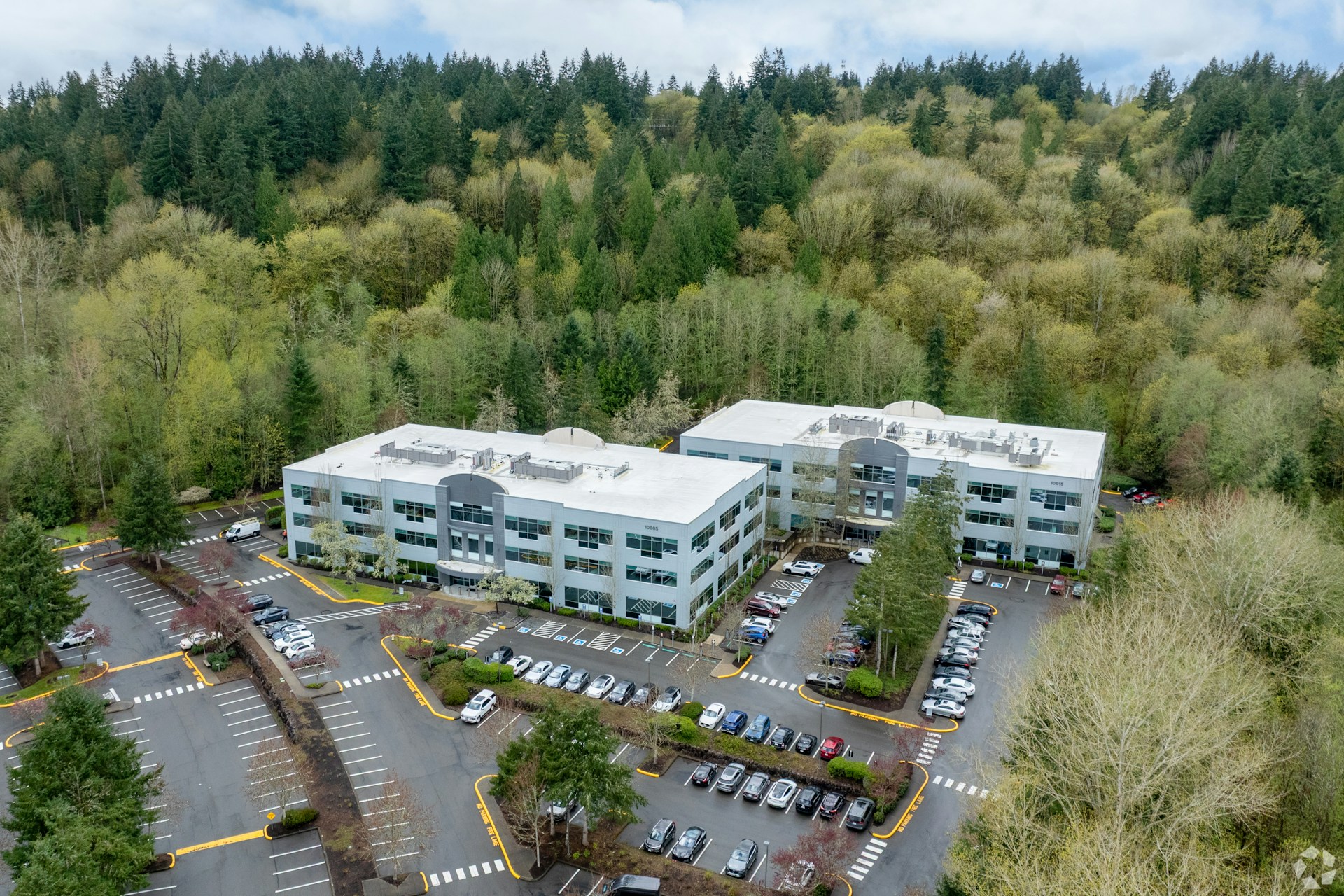Austin’s commercial real estate market ranks among the nation’s most competitive, driven by a thriving economy with consistent job growth and unemployment rates below the national average. Property values and rental rates continue climbing across office, industrial, retail, multifamily, and hospitality sectors. The Bureau of Labor Statistics reports that Austin maintains strong employment fundamentals, particularly in technology and healthcare industries, creating sustained demand for commercial space.
Access to the right financing becomes crucial when navigating this fast-moving market. Whether pursuing construction financing for ground-up development, permanent loans for acquisitions, or bridge financing for time-sensitive opportunities, we coordinate with lenders who understand Austin’s unique development landscape and can deliver capital that aligns with project timelines and budget constraints.
Which Financing Paths Fit A Commercial Buildout In Austin?

Austin’s diverse financing landscape offers construction teams multiple paths to fund a project from start to finish. We typically structure projects around three main financing phases: initial construction, permanent takeout, and bridging between phases. Each option serves different project timelines and capital stack requirements.
Short-Term Construction And Bridge Options
Construction financing provides the foundation for most buildout projects. These short-term loans typically run 12 to 36 months and focus on interest-only payments during the construction period. We use them for both horizontal land development and vertical construction, with funds released through draw schedules tied to completion milestones.
Bridge loans fill gaps between construction and permanent debt phases. They carry higher costs than construction loans but offer non-recourse terms in many cases. Austin lenders structure these loans for 6 to 36 months, supporting purchase, refinance, or rehabilitation scenarios. Bridge financing works particularly well when permanent financing requires project stabilization or leasing benchmarks.
Permanent Financing Solutions
Permanent financing replaces short-term construction debt with long-term capital. Bank loans and credit union programs offer competitive rates with flexible terms that vary by institution. Life companies provide another avenue, particularly for larger projects with strong credit tenants.
CMBS financing serves mid-market transactions where loan size and property cash flow meet specific thresholds. Agency loans through Fannie Mae and Freddie Mac focus primarily on multifamily properties. HUD multifamily programs offer favorable terms for qualifying affordable housing developments, though processing times can extend several months.
SBA Programs For Owner-Occupied Properties
SBA 7(a) loans support owner-occupied commercial properties up to $5 million in loan proceeds. These programs work well for businesses acquiring or constructing their operational headquarters. The SBA 504 program extends financing up to $20 million through a partnership between conventional bank debt and SBA debentures.
Both SBA options require owner occupancy of at least 51% of the building space. Multifamily rental properties do not qualify for SBA financing, limiting these programs to true owner-user scenarios. Processing times typically run 60 to 90 days once complete applications are submitted.
Mezzanine And Gap Financing
Mezzanine financing bridges equity gaps in larger capital stacks. We layer this debt above senior construction or permanent loans when project economics support additional leverage. Mezzanine terms typically include higher interest rates and equity participation features. These structures work best for experienced developers with proven cash flow projections.
The right financing path depends on project size, timeline, and exit strategy. We evaluate each option against construction schedules, leasing velocity, and long-term hold versus sale plans. Austin’s competitive lending market provides multiple solutions, but timing and preparation remain critical to securing favorable terms.
How Are Austin Construction And Development Loans Typically Structured?
Local lenders in Austin finance both vertical construction projects and horizontal land development initiatives. This comprehensive approach covers infrastructure elements like utilities installation, roads construction, sidewalks development, and community amenities. The scope allows developers to secure funding for complete project lifecycles rather than piecemeal financing.
The structure varies significantly based on project type and borrower profile. Development loans encompass everything from ground-up multifamily construction to medical office buildings and community development projects. Mobile home parks represent another common use case that local lenders actively support.
Loan Lifecycle And Closing Options
Some lenders offer one-time close programs that transition seamlessly from construction to permanent financing. This structure eliminates the need for separate loan applications and multiple closings, reducing both costs and administrative complexity. The single-close approach particularly benefits developers managing longer-term projects where permanent financing certainty matters.
Traditional two-close structures remain prevalent, with construction loans converting to separate permanent financing upon project completion. Each approach carries distinct advantages depending on market conditions and project timeline requirements.
Minimum Amounts And Project Types
New commercial borrowers typically encounter minimum loan amounts around $100,000 for Austin construction and development financing. This threshold accommodates smaller infill projects while maintaining lender efficiency standards. Established borrowers often access higher minimums with more favorable terms.
Commonly financed projects include multifamily developments, medical buildings, mobile home parks, and broader community development initiatives. Each project type carries specific underwriting criteria and structural considerations that influence loan terms.
Term Structures And Payment Options
Construction loans typically run 12 to 36 months, aligning with realistic project completion timelines. During the construction phase, borrowers often make interest-only payments on drawn amounts, preserving cash flow for project execution. Fixed-rate options provide payment predictability, while variable rates may offer initial cost advantages.
Bridge financing and hard-money alternatives offer accelerated closing timelines, often completing funding in weeks rather than months. These options typically run 6 to 36 months and support various scenarios including purchase, refinance, or rehabilitation projects. The speed advantage comes with higher costs but enables time-sensitive opportunities.
Leverage And Loan-To-Cost Parameters
Loan-to-cost ratios can reach up to 80% in some Austin programs, though most lenders target 65% to 75% for standard projects. Higher leverage requires stronger borrower profiles and may involve additional guarantees or collateral requirements. The remaining equity investment demonstrates borrower commitment and provides lender protection.
LTC calculations include direct construction costs, land acquisition, soft costs, and contingency reserves. Lenders evaluate total project costs against completed asset values to determine appropriate leverage levels. Market conditions and property types influence these ratios, with stabilized asset classes typically supporting higher leverage than speculative developments.
What Will Lenders Require During Approval And Draws?

Construction loan approval starts with comprehensive documentation that proves project viability and borrower capability. We work with developers who understand that preparing complete packages upfront prevents delays and demonstrates professionalism to potential lenders.
Documentation Package Requirements
Lenders require detailed construction plans that show every aspect of the build, from foundation specifications to finish schedules. Cost estimates must break down labor, materials, and subcontractor fees with sufficient detail to support the requested loan amount. Property details include legal descriptions, site surveys, and environmental assessments when applicable.
Contractor qualifications become critical verification points during underwriting. License verification, insurance certificates, and bonding capacity must be current and adequate for project scope. The signed contract outlining scope of work, timeline, and payment schedule provides lenders with construction milestones tied to funding releases.
Valuation And Title Protection
Appraisal requirements typically cover both current land value and projected completed value to establish loan-to-value ratios. Professional appraisers evaluate comparable sales, construction costs, and market conditions to determine realistic project values. Title insurance protects lenders against existing liens, easements, or ownership disputes that could compromise their security position.
We coordinate with title companies early in the process to identify potential issues before they delay closing. Clear title with proper insurance coverage ensures smooth fund disbursements throughout construction.
Underwriting Process Timeline
The underwriting phase involves comprehensive review of borrower credit, income, assets, and construction experience. Lenders analyze debt-to-income ratios, liquidity reserves, and track records with similar projects. Project complexity directly impacts approval timelines, with straightforward builds taking weeks while complex developments may require months of review.
First-time commercial borrowers often face additional scrutiny regarding construction management capabilities. Experienced developers typically move through underwriting faster due to established relationships and proven performance histories.
Draw Schedule And Disbursement Process
Funds release in predetermined draws tied to construction milestones rather than calendar dates. Each draw request requires verification of completed work through inspections before lenders authorize payment. Borrowers typically make interest-only payments on drawn amounts during the construction period, keeping carrying costs manageable.
Draw inspections verify that work matches submitted documentation and meets quality standards. We maintain detailed photo documentation and coordinate with inspection schedules to prevent funding delays that could slow construction progress.
Equity Requirements And Financial Commitments
Most programs require down payment contributions of at least 20% of total project cost, though some reach 25% or higher for riskier projects. This equity requirement demonstrates borrower commitment and reduces lender risk exposure. Cash contributions typically get deployed first, ahead of loan proceeds, to minimize interest accrual during early construction phases.
Borrowers must demonstrate sufficient liquidity beyond the required down payment to handle potential cost overruns or construction delays. Reserve requirements vary by lender but commonly range from 10% to 20% of the construction budget.
Managing Changes During Construction
Schedule delays often require term extensions that may involve additional fees or rate adjustments. We prepare contingency plans early to address potential timing issues before they become problems. Cost overruns trigger loan modifications that can include re-evaluation of LTV ratios and requests for additional funding or borrower contributions.
Borrowers can usually select their own contractors subject to lender approval standards for licensing, insurance, and financial stability. Change order processes must follow lender requirements for documentation and approval to maintain compliance with original loan terms.
What Terms Do Local Credit Unions And Banks Commonly Offer?
Credit union commercial loans combine competitive fixed rates with community-focused lending practices. These institutions typically structure commercial real estate loans with 20-year amortization periods, which balance manageable monthly payments against reasonable payoff timelines. Fixed rates help borrowers plan accurately for debt service without worrying about interest rate fluctuations over the loan term.
Credit unions stand out for their no prepayment penalty approach, allowing property owners to refinance or sell without additional costs when market conditions favor these moves. Local underwriting means decisions happen closer to the property and borrower, often resulting in faster approval times and more flexible qualification standards. Many credit unions also support investor funding for both single-family and multifamily projects, expanding opportunities beyond owner-occupied properties.
Bank loans offer their own advantages through competitive rates and terms that adapt to each institution’s lending focus. Community banks often excel with smaller or simpler properties where personal relationships and local market knowledge create value. Regional banks may provide more sophisticated structures for complex deals, while maintaining the flexibility that larger national lenders sometimes lack.
Rate display practices vary significantly among local lenders. Some institutions publish fixed-rate options and detailed product matrices that outline terms, loan-to-value limits, and qualification requirements. However, these published rates serve as starting points rather than guaranteed offers, since actual terms depend on property type, borrower qualifications, and current market conditions.
Minimum loan amounts represent an important consideration for new commercial borrowers. Many programs set floors around $100,000, though some institutions accommodate smaller projects depending on the relationship and property type. We recommend confirming these minimums early in the process to avoid wasted time on applications that won’t meet basic thresholds.
One-time close programs deserve special attention for construction projects. These structures allow borrowers to secure both construction and permanent financing through a single application and closing process, reducing costs and complexity. However, not all local lenders offer this convenience, making it worth asking about during initial conversations with potential lenders.
Conclusion: Building Your Vision with the Right Financial Foundation

Successfully navigating Austin’s dynamic commercial real estate market hinges on securing the right financing. The path from a project’s conception to its completion is paved with diverse funding options—from short-term construction loans and bridge financing to permanent solutions offered by banks, credit unions, and government programs like the SBA. Each avenue has unique requirements for documentation, equity, and borrower qualifications, making careful preparation and strategic planning paramount. Ultimately, aligning your project’s timeline, budget, and exit strategy with the appropriate capital structure is the key to unlocking its full potential in this competitive landscape.
Let the experts at EB3 Construction help you navigate this complex financial terrain and build your vision with confidence. Contact us today to discuss your upcoming project and discover how our expertise can work for you.




